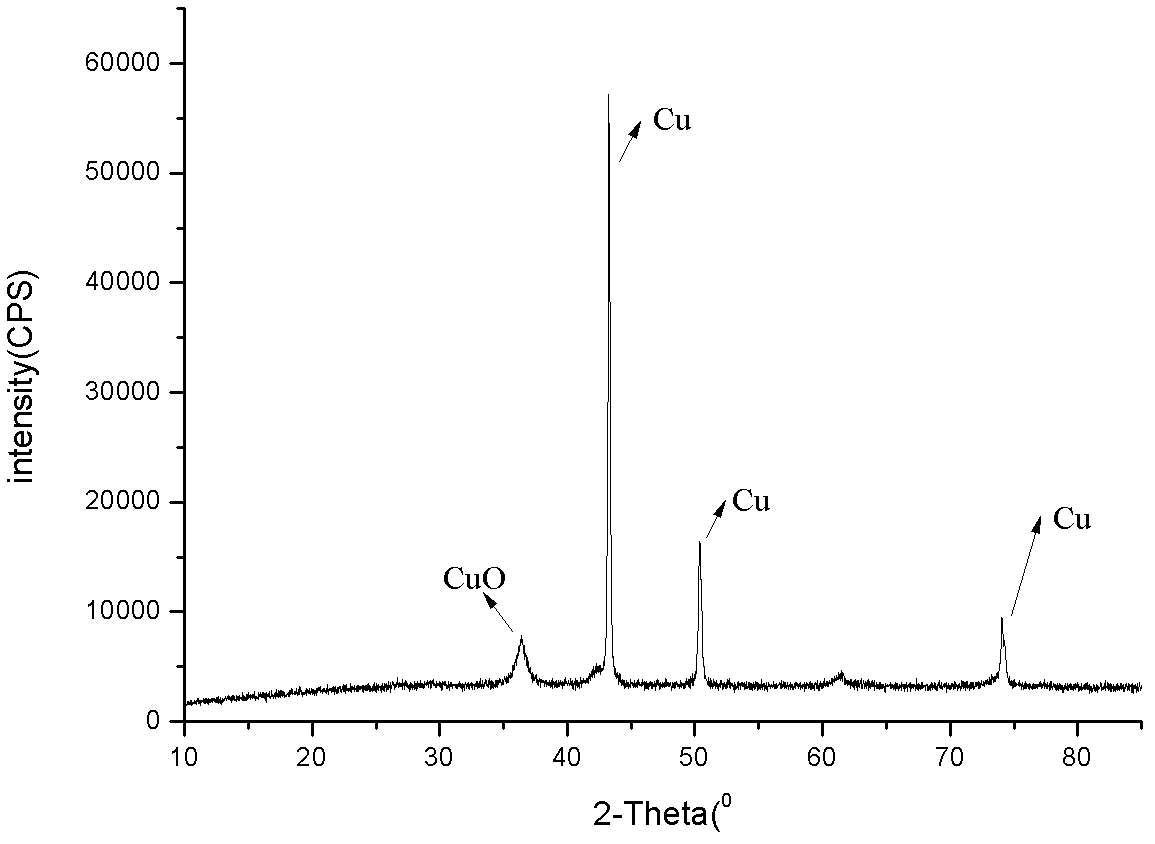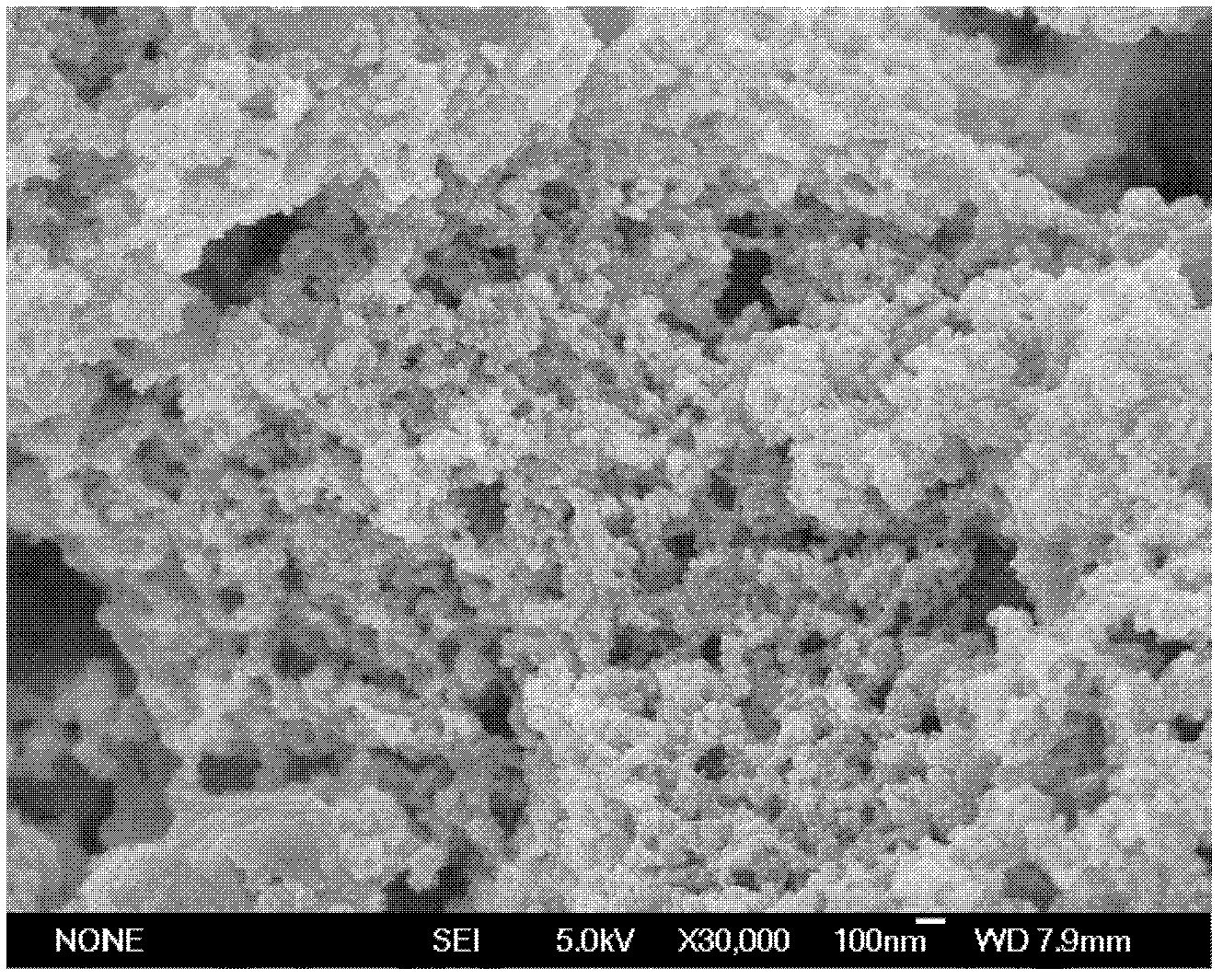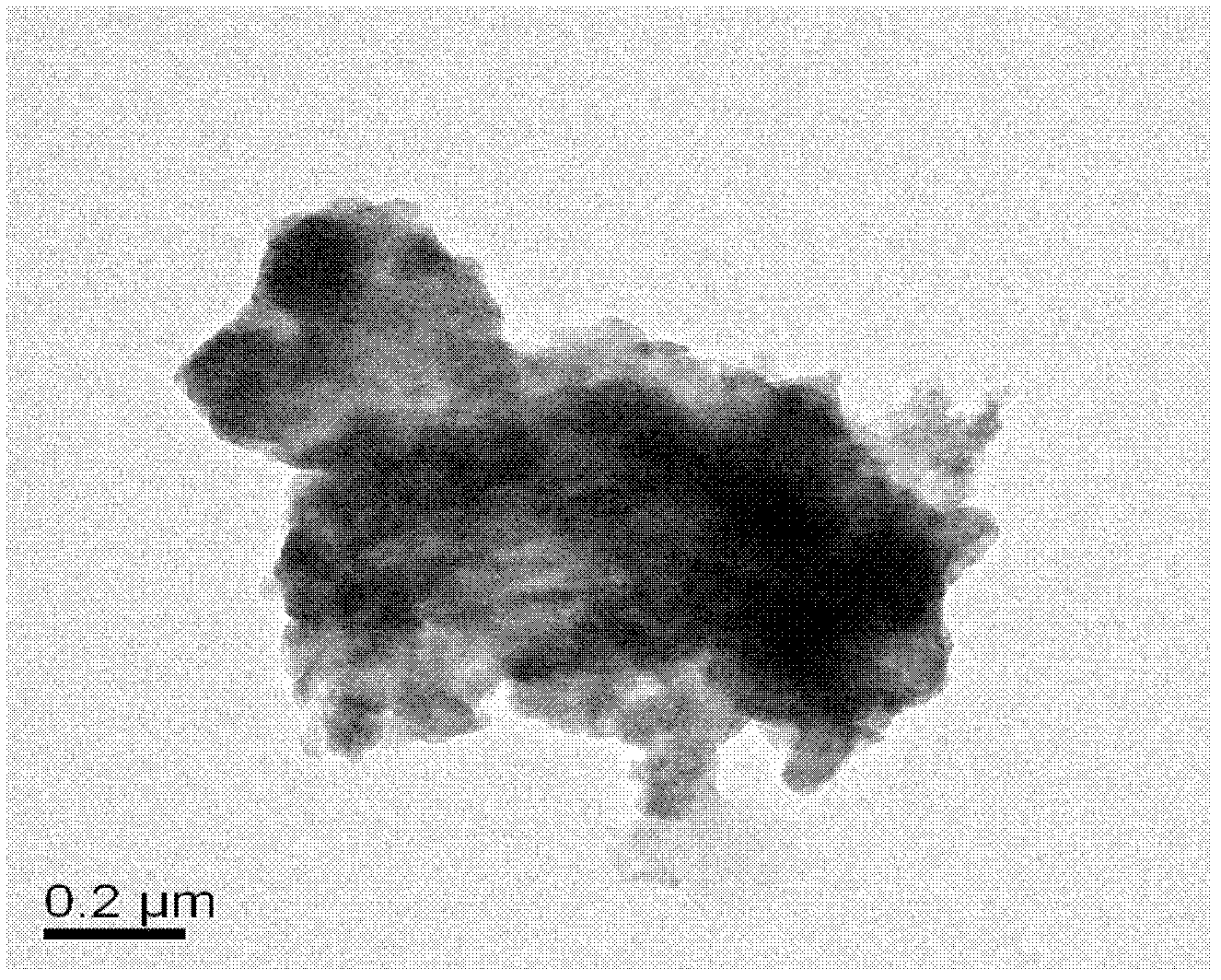Method for preparing nano copper particle
A technology of nano-copper and particles, which is applied in the direction of nano-technology, can solve the problems of easy agglomeration, poor fluidity, and complex production of products, and achieve the effects of good dispersion, reduced production costs, and slowed down nucleation speed
- Summary
- Abstract
- Description
- Claims
- Application Information
AI Technical Summary
Problems solved by technology
Method used
Image
Examples
Embodiment 2
[0036] 1) Prepare 0.2mol / L copper sulfate pentahydrate solution and 0.5mol / L oleic acid ethanol solution at a molar ratio of 4:1, and stir the mixture for 30 minutes to extract divalent copper ions into the organic phase, That is, the precursor solution is obtained.
[0037] 2) Add an appropriate amount of glucose aqueous solution to the above-mentioned precursor solution, the molar concentration ratio of glucose and copper salt is controlled at 2:1, and the molar ratio is controlled at 2.5:1; at room temperature, magnetically stir for 10 minutes, so that the divalent copper ions are Completely reduced to cuprous oxide.
[0038] 3) An appropriate amount of sodium hypophosphite solution is added to the above mixed solution, the molar concentration ratio of sodium hypophosphite to copper salt is 2:1, and the molar ratio is 2:1. In a water bath at 60°C, stir magnetically for 30 minutes to completely reduce the cuprous oxide to simple copper.
[0039] 4) The product was centrifu...
Embodiment 3
[0041] 1) Mix 0.2mol / L copper sulfate pentahydrate solution with a certain amount of oleic acid (0.1mol / L~1.0mol / L) solution in a molar ratio of 1:2. The mixed solution was stirred for 30 minutes, so that the divalent copper ions were extracted into the organic phase, and the precursor solution was obtained.
[0042] 2) Add an appropriate amount of glucose aqueous solution to the above-mentioned precursor solution, the molar concentration ratio of glucose and copper salt is 2:1, and the molar ratio is controlled at 1:2; at room temperature, magnetically stir for 10 minutes, so that the divalent copper ions are completely Reduction to cuprous oxide.
[0043] 3) Add an appropriate amount of sodium hypophosphite solution to the above mixed solution, the molar concentration ratio of sodium hypophosphite to copper salt is 2.5:1, and the molar ratio is controlled at 1:2. In a water bath at 60°C, stir magnetically for 30 minutes to completely reduce the cuprous oxide to simple coppe...
Embodiment 4
[0046] 1) Prepare a mixture of 0.5 mol / L copper sulfate pentahydrate solution and 1.0 mol / L oleic acid ethanol solution, and mix them at a molar ratio of 1:5. The mixture was stirred for 30 min to extract the divalent copper ions into the organic phase to obtain the precursor solution.
[0047] 2) Add an appropriate amount of glucose aqueous solution to the above-mentioned precursor solution, the molar concentration ratio of glucose and copper salt is 4:1, and the molar ratio is controlled at 3:1; at room temperature, magnetically stir for 10 minutes to completely dissolve the divalent copper ions Reduction to cuprous oxide.
[0048] 3) An appropriate amount of sodium hypophosphite solution is added to the above mixed solution, the molar concentration ratio of sodium hypophosphite to copper salt is 3:1, and the molar ratio is controlled at 4:1. Under 60°C water bath, magnetically stir for a certain period of time (60min-90min), so that the cuprous oxide is completely reduced ...
PUM
 Login to View More
Login to View More Abstract
Description
Claims
Application Information
 Login to View More
Login to View More - R&D
- Intellectual Property
- Life Sciences
- Materials
- Tech Scout
- Unparalleled Data Quality
- Higher Quality Content
- 60% Fewer Hallucinations
Browse by: Latest US Patents, China's latest patents, Technical Efficacy Thesaurus, Application Domain, Technology Topic, Popular Technical Reports.
© 2025 PatSnap. All rights reserved.Legal|Privacy policy|Modern Slavery Act Transparency Statement|Sitemap|About US| Contact US: help@patsnap.com



